Food
Benefits of sardine for diabetes

Discover the benefits of sardine for diabetes.
A new study reveals that regular consumption of this fish has a preventive effect against type 2 diabetes.
The healthy effects of sardines and oily fish have been widely recognized: their high levels of unsaturated fats help regulate cholesterol and prevent cardiovascular diseases.
But now, in addition, a new study has revealed that it has even more benefits for our health: regular consumption of sardines has a preventive effect against type 2 diabetes.
The work is led by Diana Díaz Rizzolo, professor, and researcher at the Health Sciences Department of the Open University of Catalonia ( UOC ) and the August Pi I Sunyer Biomedical Research Institute ( IDIBAPS ).
The team has discovered that certain nutrients present in high amounts in sardines, such as taurine, omega 3, calcium, and vitamin D, have a protective role against this disease, which affects around 14% of the Spanish population over 18 years of age, according to the best study.
The teacher has also recalled that, in addition, the consumption of sardine “is affordable and easy to find, and it is easy to recommend its consumption from the doctor’s office”.
Researchers from the Translational Research Group on Diabetes, Lipids, and Obesity and the Transversal Research Group on Primary Care, both from IDIBAPS, IMIM, the Fatty Acid Research Institute (USA), and the University of Barcelona, also participated in the research. , CIBERDEM and the Department of Endocrinology and Nutrition of the Hospital Clínic de Barcelona. The results of the study have been published openly in the prestigious journal Clinical Nutrition.
Two cans of sardines a week
The study included 152 patients 65 years of age or older with prediabetes. One group of them added 200 grams of sardines per week to their diet (two cans of sardines with olive oil), and another group did not.
To facilitate its consumption, and thanks to the collaboration of the Alicia Foundation, the participants received a recipe book based on canned sardines. It was recommended that the whole sardine be eaten, that is, without removing the skeleton, since this part is especially rich in calcium and vitamin D.
The group that did not include sardines in the diet started with 27% of people at very high risk of diabetes, and after a year 22% were still in that classification. On the other hand, the group that ate sardines had 37% of participants at high risk at the start of the study, and after one year only 8% were still at very high risk.
In addition, other important biochemical parameters improved, such as a decrease in the insulin resistance index (HOMA-IR) and an increase in good cholesterol (HDL) and hormones that improve glucose metabolism (adiponectin), in addition to decreasing triglycerides and blood pressure, among other parameters.
Dr. Rizzolo states: “The results make us think that we could achieve an equally interesting preventive effect in younger people “.
Another very interesting point that the study reveals is that the positive effect is achieved by taking the complete food, that is, the sardine: “The sardine will have a protective element because it is rich in the aforementioned nutrients (taurine, omega 3, calcium and vitamin D ), but the nutrients taken in isolation in the form of supplements will not be so, “says Rizzolo.
In a second phase, the researchers have begun to study the effect of this oily fish on the intestinal microbiota, “given that it has an effect on the regulation of many biological processes and we have to understand if it has played the part of this protective effect against diabetes 2,” explains Rizzolo.
They have also started studies on the modulation of the expression of some genes related to inflammation that could play a role in the development of type 2 diabetes and many other diseases.
Related searches…
Is canned tuna good for diabetics
Is fried fish good for diabetics
Is fish good for diabetes
Can diabetics eat fish and chips
Is mackerel good for diabetics
Are pilchards good for diabetics
Can sardines lower blood pressure
Is sardines in tomato sauce good for diabetics
Canned sardines and diabetes
Sardines benefits
Best sardines for diabetics
Sardine recipes for diabetics
What seafood is bad for diabetics
Food
6 Benefits of sweet orange essential oil
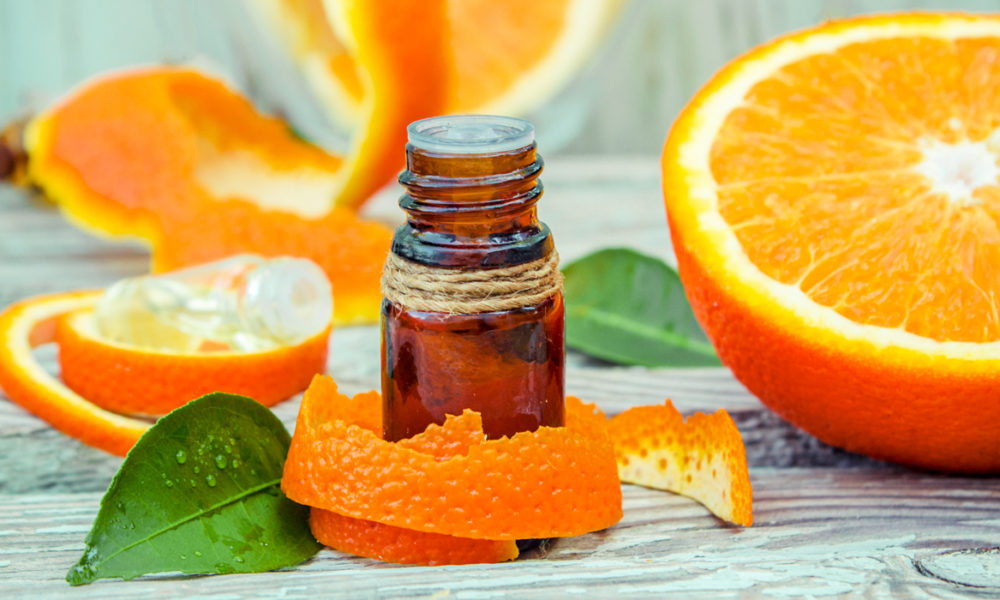
Table of Contents
Food
9 Benefits of Kosher salt and side effects

Table of Contents
- 9 Health Benefits of kosher salt
- Kosher salt facts
- Discover the 9 shocking health benefits of Kosher salt and side effects.
Kosher salt is a coarse-grained salt that is obtained from salt crystals. It is also known as rock salt, kitchen salt, koshering, as well as flake salt.
- Like its name, it is often used in the process of cooking koshering meats to remove blood from the surface.
Kosher salt is much larger compared to other types of salt, it also has a more porous grain size than common salts.
There are also some other types of salt that you can try, such as the health benefits of sea salt and the health benefits of Himalayan salt.
It contains sodium chloride but is not normally considered iodized salt as it does not contain mineral iodine.
- However, it also contains a small number of anti-caking agents, which is considered useful to rescue sodium.
This can be said because a teaspoon of kosher salt only contains up to 1,120 milligrams of sodium, while ordinary salts contain about 2,325 milligrams of sodium when the normal daily need for sodium is only 2,300 milligrams.
Now you must be curious, what are the health benefits of kosher salt? Let’s learn more now.
9 Health Benefits of kosher salt
1.- Rich in essential minerals
The sodium and chloride contained in salt are essential for our body, especially brain function and the conduction of nerve impulses.
Even more, salt itself is not harmful at all and does not cause heart disease as it binds to water in our bloodstream.
It can only become a problem if it is consumed in excess. Keep in mind that one of the health benefits of bone marrow is also supplying your body with minerals.
2.- Lower sodium level
As we said before, this type of salt contains only about 1,800 milligrams of sodium, while common table salts can contain sodium up to 2,300 milligrams per teaspoon.
So if you ever find yourself needing more flavor in your food, choose kosher salt instead.
Read here to learn more about the health benefits of sodium.
3.- Less processed
It is obtained from land-based salt mines, so it does not go through as much process as any other common salt.
Keep in mind that all types of salt are similar in chemical structure once the iodine is removed from the mixture.
But, kosher salt doesn’t contain any artificial additives in the first place, which makes all other table salts flow freely.
4.- Easier to use
It has a long crystalline structure and a coarse texture, which makes it very easy to sprinkle on shiny dishes. Not to mention that it is lighter in weight than other salts.
5.- Deeper flavor
In addition, this type of salt has a deeper and fuller flavor on the tongue since it is thick and full of minerals.
This makes the salt able to add more flavor to your dish in less quantity than common table salts, since under this, it is less processed in nature, making the salt even healthier for your body due to the lower sodium level again.
This way, you can halve the amount of salt needed in your recipes by choosing kosher salt instead.
6.- It dissolves better
This type of salt dissolves better with food and we can easily adhere to it.
Less time on the stove can also be healthy in some way – for example, if you are grilling meat, then it won’t take long for the salt to seep into the meat.
Less time to grill means less time for the meat to burn, which is bad for your health. Also, if you’re in a rush, kosher salt would be a good option!
7.- Does not contain additives
Unlike other common table salts, kosher salt does not contain any additives. Some common additives found in common tablet salts include sodium iodide, sodium iodate, and potassium iodide.
Other sodium such as sodium ferrocyanide or sodium silicoaluminate is often added to common table salt as an anti-caking agent, whereas kosher salt obtained this two sodium only occasionally, making it a better salt option once. more.
Keep in mind that one of the health benefits of banana leaves is also being a good additive for weight loss.
8.- Cleaner flavors palette
Since it does not contain any additives, the salt has a cleaner flavor palette than common table salts.
Kosher tastes smoother, cleaner and lighter. This also makes the kosher taste less salty than common table salts.
9.- Curing the meat
It is usually an ideal option also if you are looking to cure meat, as it has a large surface area. The salt will then be able to absorb more moisture than other common table salts and the aged meat will have a longer “shelf life”.
Kosher salt facts
Not only that, but kosher salt also has a ton of other unique facts, such as:
• Because it has a flake-shaped crystal, kosher salt is easier to grasp when seasoning your food by hand than any other common table salt.
• It tastes better than any other common table salt.
• It is cheaper than any other common table salt.
• Easy to find.
• 1 teaspoon of Morton’s salt, an infamous brand of kosher salt, is equal to ¾ teaspoon of any other common table salt.
• Now that you’ve learned the health benefits of kosher, don’t you want to put it on your plates immediately? Here’s a recipe you can easily follow at home – with kosher salt!
Food
10 Benefits of beeswax and side effects
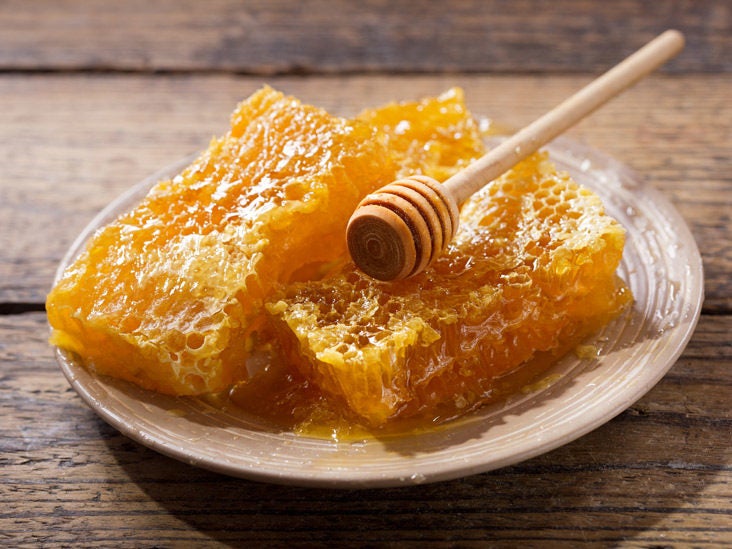
Table of Contents
- Uses and benefits of beeswax
- 1.- Treat diaper rash, psoriasis and eczema
- 2.- Hydrates the skin
- 3.- Protects the liver
- 4.- Master cholesterol levels
- 5.- Relieves pain and is anti-inflammatory
- 6.- It clears up acne
- 7.- Heals dry and chapped lips
- 8.- Reduce stretch marks
- 9.- Treat fungal infections of the skin
- 10.- Relieves stress and promotes relaxation
- More about the uses and benefits of beeswax
- Final thoughts on the benefits of beeswax
- Discover the 10 Benefits of beeswax and side effects.It’s just beautiful how the creatures on earth, specifically bees, can make the most wonderful structures. Take, for example, the honeycomb. It is even more surprising when such a structure produces something that provides many uses for everyday life, such as the benefits of beeswax.This amazing substance comes from worker bees, female bees, and the honeycomb, and is commonly used to lower cholesterol and relieve pain.It is also used for swelling and inflammation, and of course, it helps produce different forms of raw honey, including the highly beneficial Manuka honey.This should come as no surprise, as another bee by-product, bee pollen, is very beneficial. So what else can beeswax do? Let’s take a look at the biggest benefits and uses of this natural product.
Uses and benefits of beeswax
1.- Treat diaper rash, psoriasis and eczema
Beeswax is a great option for many skin conditions. A mixture of honey, beeswax, and olive oil is helpful in treating diaper rash, psoriasis, and eczema.
A study that was designed to investigate the effects of these three substances and the mixture on the growth of Staphylococcus aureus and Candida albicans isolated from human specimens; carried out two experiments: one in which a mixture of honey was poured into holes made with plates seeded with Staphylococcus aureus or candida and two where the microorganisms were cultured in media made only of the mixture of honey, nutrient agar and Sabouraud glucose honey agar- honey mixture.
2.- Hydrates the skin
Beeswax is an amazing way to hydrate the skin and is commonly found in skin care products and cosmetics.
Similarly, it has the ability to repair and take care of the symptoms of so-called dry and cracked skin, thanks to its ability to block moisture from the body.
In the book “How to Use Beeswax and Honey to Heal Skin Problems,” author Gene Ashburner explains that this wax has a rich content of vitamin A and emollient properties that soften and rehydrate the skin and aid in the healthy development of cell reconstruction. Another benefit of its use is that, because it is comedogenic, it will not clog pores.
As well as being a natural moisturizer that treats dry skin, you can use it daily to help prevent dry skin in the first place.
To do this, try to combine the beeswax with a few drops of jojoba or almond oil, or you can add vitamin E, Aloe Vera or essential oil, the intention is that you get a homemade infusion to take care of your dry skin.
3.- Protects the liver
In 2013 a study was published that investigated the alcohols found in honeycomb and whether their antioxidant effects helped protect the liver, on that occasion they were based on the use of beeswax to verify its efficacy and safety in patients with diseases like fatty liver; The study, which lasted 24 weeks, found that this product was able to regulate liver function and reduce the symptoms caused by fatty liver.
4.- Master cholesterol levels
Nutritional or regulatory effects produced by wax esters or aliphatic acids and alcohols found in unrefined cereal grains, beeswax, and many plant-derived foods reduce low-density (“bad”) lipoprotein cholesterol by 21 percent to 29 percent and increase high-density lipoprotein (“Good”) cholesterol by 8 percent to 15 percent.
5.- Relieves pain and is anti-inflammatory
As a medicine, the benefits of beeswax have been studied in relieving pain and inflammation and has mild anti-swelling effects.
One study reports that it was used to help relieve inflammation caused by osteoarthritis. All randomized patients completed the study and 23 experienced a reduction in pain, joint stiffness, and physical function. These reductions were significant from the second week on and improved during the trial.
6.- It clears up acne
Beeswax is one of the best known and popular home remedies that are used to improve skin conditions caused by acne. It has strong antiseptic, healing and anti-inflammatory properties, making it effective in treating acne, particularly because it contains vitamin A.
It is also an excellent skin softener and emollient that helps maintain a smooth skin texture after acne removal. The combination of skin care applications, a healthy diet, and daily exercise is the best way to control and prevent acne.
7.- Heals dry and chapped lips
The natural moisturizers in beeswax make it the perfect lip balm. If you suffer from chapped or chapped lips, topical applications of beeswax and a few other ingredients can provide much-needed relief.
Making a homemade lip care balm is extremely easy, you just have to make sure to combine it with honey, coconut or vitamin E oils, in the same way, you can use essential oils based on mint, lavender, orange, lemon or fragrance of your choice.
8.- Reduce stretch marks
Stretch marks can be embarrassing and keep you from wearing some of your favorite summer fashions, so if you’re wondering how to get rid of stretch marks, you may want to try the benefits of beeswax.
A study conducted in Korea reports that stretch marks are dermal atrophic scars with epidermal thinning due to decreased collagen and elastic fiber.
The study suggests that collagen is an important component of the extracellular matrix that is very important in wound healing.
Since the benefits of beeswax contain vitamin A, it is usually useful in the production of collagen, in addition, it tends to be very beneficial for the reduction of stretch marks.
By combining beeswax, royal jelly, shea butter or cocoa butter, grape seed oil, and coconut oil, you have a natural remedy to prevent and treat stretch marks while helping to improve collagen levels simultaneously.
9.- Treat fungal infections of the skin
Fungal skin infections are definitely annoying, but they can be treated with the benefits of beeswax.
Because it is anti-inflammatory, it can help reduce pain associated with rash and fungal skin infections while providing hydrating benefits to help reduce itching.
Early research suggests that applying a mixture of beeswax, honey, and olive oil to the affected area three times a day for four weeks can go a long way in improving fungal and fungal skin infections on the skin.
10.- Relieves stress and promotes relaxation
It’s common to think of beeswax candles when you think of beeswax. This is a good thing as candles made with paraffin can endanger your health and that of your family due to the soot from the paraffin wax that can be inhaled.
Additionally, it can cause significant damage to the interior of your home, such as your computers, appliances, and ducts.
Instead, opt for these natural candles, which work well as stress relievers; If you make your own candles, you want to check the labels to make sure you are getting organic beeswax as it is free of toxins.
If you are shopping for ready-made beeswax candles, choosing 100% beeswax candles with cotton wicks is definitely the best option.
More about the uses and benefits of beeswax
• In addition to the benefits and uses above, there are some additional uses for honey and beeswax.
• The top three beeswax products are yellow beeswax, white beeswax, and absolute beeswax. Yellow beeswax is the raw product obtained from the honeycomb. White beeswax is made from yellow beeswax by bleaching, and absolute beeswax is made by treating yellow beeswax with alcohol.
• It is often found for sale in lozenge or lozenge form, which has a deep golden color. With an average dimension of three millimeters per lozenge, beeswax sometimes has a smoky aroma.
• Beeswax for hair is an ingredient frequented by those looking to develop dreadlocks because it helps give hair a good firm hold while hydrating it without a greasy appearance.
• If you are using it for food prep, the easiest way to do that is to put it in the freezer for a few hours and then grate it. In many foods and beverages, white beeswax and absolute beeswax are used as reinforcing agents. In manufacturing, yellow and white beeswax are used as thickeners, emulsifiers, and stiffening agents in cosmetics. However, it is most commonly used to make ointments and moisturizers that are used externally.
• Absolute beeswax is generally used as a fragrance in soaps and perfumes. White beeswax and absolute beeswax are also used to polish the pads. Yellow beeswax is the shape we love the most because of its natural state. Regardless, be sure to check the ingredients and instructions before using any form of this, and if you have an allergy that might be related, don’t use it.
Final thoughts on the benefits of beeswax
If you have any allergy concerns, beeswax can present problems for you. It is important to check with your doctor before using it in any form, especially if you are pregnant, nursing, or taking medication.
However, it is generally safe as it is a natural substance, so keep the following in mind:
• Beeswax treats diaper rash, psoriasis, and eczema; Moisturizes the skin; protects the liver; Reduces cholesterol levels; relieves pain and has anti-inflammatory properties; clears up acne; heals dry and chapped lips; reduces stretch marks; treats itchy feet and fungal skin infections; and relieves stress and promotes relaxation.
• It can also be used for hair, food preparation, fragrances in soaps and perfumes, and to polish tablets. Evidence even shows that it may have been used as a tooth filling.
• We rely on bees for almost a third of our entire food supply. We also benefit greatly from all the fibers, spices and medicines that come from the plants that pollinate.
• Bees affect more than just our food and medicine. Honey bees are linked to several critical human and environmental health issues, including biodiversity, food security, nutrition, and sustainable land use. A world without bees would not be possible as bee health is a critical step for sustainable agriculture.
-

 Benefits5 months ago
Benefits5 months agoThe Benefits of Joining Gym Lumolog – Improve Your Fitness & Health
-

 Food1 year ago
Food1 year ago10 + Benefits of carrot juice and side effects
-

 Health1 year ago
Health1 year ago50 Super Healthy (And Very Often Cheap) Foods
-
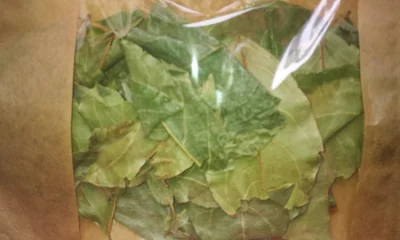
 Health1 year ago
Health1 year ago5 Shocking health benefits of kinkeliba and side effects
-
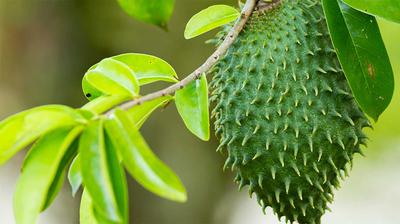
 Health1 year ago
Health1 year ago15 health benefits of soursop leaves tea and side effects
-

 Food1 year ago
Food1 year ago8 shocking benefits of leek juice and side effects
-

 Health1 year ago
Health1 year ago15 Benefits of lipton tea and side effects
-
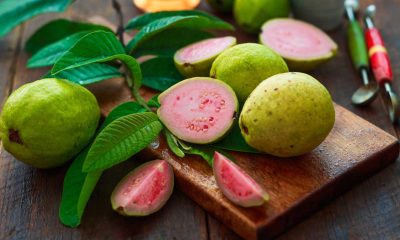
 Health1 year ago
Health1 year agoBenefits of guava leaves Sensually












